When Zeus Turned Day Into Night
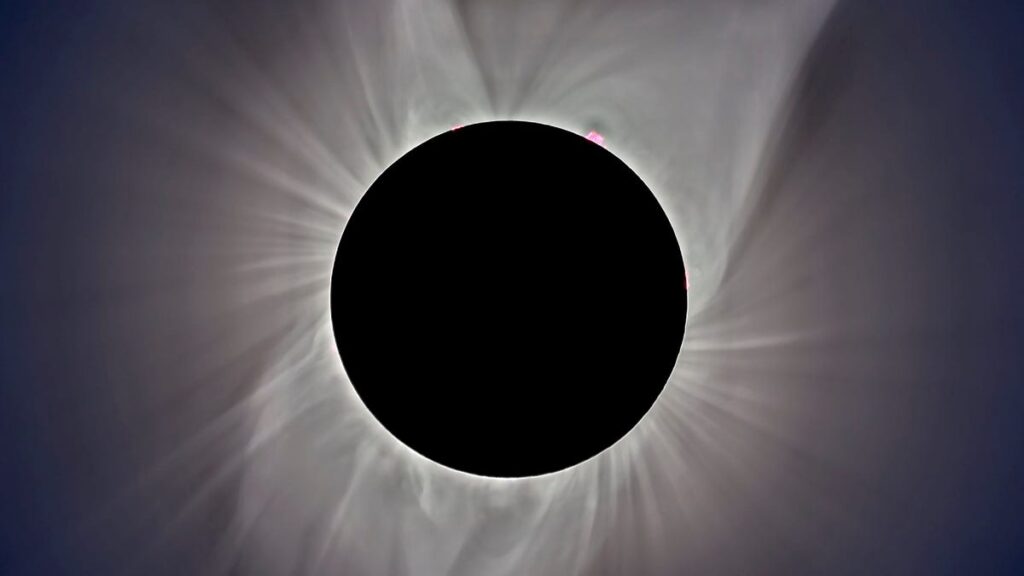
Written by Lou Mayo
Professor of Astronomy, Marymount University
Chief Scientist, GAMA-1 Technologies
For thousands of years, civilizations have observed and revered the ever-dependable movement of the heavens through time. They knew with certainty that the sun will rise and set, spring will follow winter, and day will follow night. The moon moves through its predictable patterns and the planets orbit quietly, steadily, all in harmony with the natural world we live in.
It is this sense of certainty that we wake up to each day. We may not always be aware of it but just imagine if there was no world to wake up to, a universe without an Earth, without humanity. Pretty unsettling huh? But these are the thoughts that occupied the minds of whole civilizations for thousands and thousands of years during a solar eclipse. Actually, most changes in the heavens, the realm of gods who determined individual and societal destinies, were met with fear. Meteor showers, lunar eclipses, comets were all viewed as bad omens at best and the end of all things or Armageddon at worst. All of these events rocked our collective sense of security and certainty about the world around us and were very scary.
The earliest writings we have showing that people paid attention to eclipses in any official way are around 4,000 years old. Ancient Chinese records (the Shu Ching) of the solar eclipse that occurred (most likely) on October 22, 2134 B.C. translates to: “the Sun and Moon did not meet harmoniously.” Sadly, the two royal, court astronomers, Hsi and Ho were reportedly beheaded for failing to predict the event. Apparently, the Emperor found out when he heard much noise in the streets as his subjects tried to drive away the dragon that was eating the sun. Thankfully, they succeeded.
The Greek poet, Archilochus spoke of the total solar eclipse of 6 April 648 BC:
“Nothing there is beyond hope, nothing that can be sworn impossible, nothing wonderful, since Zeus, father of the Olympians, made night from mid-day, hiding the light of the shining Sun, and sore fear came upon men.”
(https://eclipse2017.nasa.gov/eclipse-history) Archilochus
There are numerous writings about eclipses through the ages. The British poet, John Milton, writes in Paradise Lost:
“As when the Sun, new risen,
Looks through the horizontal misty air,
Shorn of his beams, or from behind the Moon.
In dim eclipse, disastrous twilight sheds
On half the nations and with fear of change
Perplexes monarchs”
Solar eclipses were by all accounts events of wondrous and magical proportions. Today, of course, we understand eclipses very well. We know how and why they happen and when they happen. We have seen eclipses from other worlds. We have used eclipses to probe the laws of physics and to discover new worlds outside our own solar system. Still, they hold their ancient magic and are fascinating to watch.

Such was the case for the last total solar eclipse visible from North America, the 2017 “Eclipse Across America” seen by millions throughout North and South America. And, such will be the case again for the April 8, 2024 total solar “Eclipse Across America”. The path of totality; the small, (perhaps 100 miles wide) swath of real estate within which the eclipse is total and the sun’s tenuous corona can be seen will begin on the west coast of Mexico, at Mazatlan, at 10:51am MDT. It proceeds from there through central and eastern United States up through Texas, Oklahoma, Arkansas, Missouri, Kentucky, Illinois, Indiana, Ohio, Pennsylvania, New York, Vermont, New Hampshire, and Maine. The path then continues on through Canada into Ontario, Quebec, New Brunswick, Nova Scotia, Prince Edward Island, and finally, Newfoundland before heading out to sea.
Though these are the places where a total solar eclipse can be viewed, partial phases of the eclipse will be seen throughout most of North and Central America and small portions of South America and Western Europe.
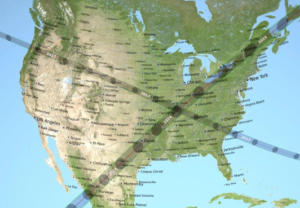
The maximum duration of totality for this eclipse will be 4 minutes and 28 seconds, near Torreon, Mexico, roughly twice the duration of the 2017 eclipse. In theory, totality can last as long as just over seven and a half minutes though totality lasting for more than 7 minutes is very rare.
For some great eclipse materials and live eclipse programming on the day of the eclipse, including NASA EDGE streams, eclipse images from telescopes all along the path, educational activities, and scientist interviews, you can go to: https://eclipse.siu.edu
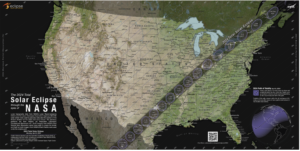
Experiencing an Eclipse
Total solar eclipses are amazing sights which is why people from all over the world travel long distances to remote places to view them. It is said that the difference between viewing a partial eclipse and a total eclipse is the difference between night and day (most literally!).
During a total solar eclipse, the sky grows dark very rapidly as totality begins. Stars and planets come out, animals display their nocturnal behaviors, crickets may stop chirping, birds may stop singing, confused animals assuming night has fallen often go to their dens or nests for sleep. There is an eerie sense of calm as the mid-day sun that we are so used to (the photosphere) all but vanishes. In its place is a black disk about ½ degree in size and the beautiful solar corona that can only be seen on such occasions. There is usually great excitement as eclipse watchers announce the beginning of totality standing firmly in the moon’s shadow, with whoops and hollers. All eyes are on the sun. Camera shutters click randomly as astronomy enthusiasts hurry to capture the event with telescopes, DSLR’s, and other equipment. Then, too soon, the sun peaks out again from behind the moon and totality is over until the next total solar eclipse.

Eclipse Geometry
OK, we know that solar eclipses happen when the moon moves in front of the sun and so these eclipses happen only at new moon when the sun, moon, and Earth are aligned. From the preceding text, it is clear that at least the Chinese and most probably other cultures knew that sun-moon conjunctions caused eclipses over 4,000 years ago. We also know from ancient Chinese records, that they could predict the solar eclipse occurrences with some accuracy by around 200 CE.
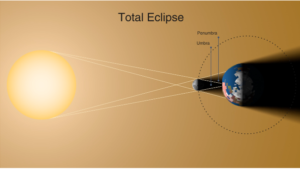
It turns out that, in our solar system, only for our Earth is the moon almost precisely the same angular diameter as the sun (about 30′ or ½ degree). This is because though the sun is about 400 times larger in diameter than the moon, it is also 400 times further away. No other planet in our solar system experiences this same geometry because no other planet has a moon similar in angular diameter to the sun. This alignment producing a total solar eclipse would happen every synodic month (one synodic month = 29.5 days which is the time it takes from new moon to the next new moon) if it weren’t for the fact that the orbit of the moon is tilted with respect to the Earth’s orbit around the sun (the ecliptic) by around five degrees. This is not much but it is enough to make the moon’s shadow miss too high or too low most of the time.
It is interesting to note that only the Earth’s moon orbits near the ecliptic (tilted 5 degrees). Most planetary moons orbit in the plane of the planet’s equator). There are two places in its orbit where the moon’s shadow doesn’t miss the Earth and can cause a solar eclipse to occur. These places are cryptically called the ascending and descending nodes. They are the points along the intersection of the Earth and moon’s orbital planes where the orbits intersect (recall from your High School geometry class that two planes intersect in a line and that two points define a line segment). The line defined by these two points is called the line of nodes (Figure 3). Eclipses occur when the moon passes anywhere within+/- 18.5 degrees of a node. This angle of opportunity is called an eclipse zone and the sun, traveling along the ecliptic at close to 1 degree a day, takes 37 days (18.5 degrees X 2) to cross through an eclipse zone. Since the moon’s synodic orbital period is just 29.5 days, at least one solar eclipse must occur during each of the Sun’s node crossings. So, there will be at least two solar eclipses every year, though not necessarily total.
The period of time when the sun is near a node is called an eclipse season and so as you might imagine, there are two eclipse seasons each year as the sun passes through the ascending and descending nodes. You can simulate this geometry very nicely with two hoola hoops placed one inside another and a bit tilted from one another.
Had enough? No? Great! Let’s talk about Saros Cycles!
In order for a total eclipse to occur, the sun, moon, and Earth must line up, must be in just the right positions at just the right times. When this happens, a total eclipse can be seen along a path of totality somewhere on Earth. The placement of the path has to do with different definitions of a lunar month.
It turns out that you can characterize eclipse geometry based on exactly where in its orbit the moon is when this alignment occurs. There are three ways to measure these lunar cycles that, when taken all into account define the location and geometry of the path of totality on the Earth. These lunar cycles, the Synodic, Anomalistic, and Draconic months are defined in the tables below and conspire to define every solar eclipse.
The Saros Cycle is a period of exactly 223 synodic months = 18 years 11 days 8 hours (6585.3211 days) where the Earth, moon, and sun return to the same relative positions. Notice the extra 8 hours, or about 1/3 of a day. Two eclipses separated by one Saros, are nearly identical in form, but separated by 1/3 of a day, 1/3 the circumference of the Earth (ref. figure 6).

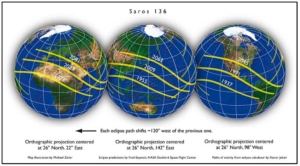
The harmony or resonance between these periods defines the eclipse geometry such as the path of totality and duration of the eclipse. Taking these cycles into account, eclipses separated by 223 lunar or synodic months= 6,585.321 days (18 years, 11.321 days) or one Saras Cycle (first termed by Edmund Halley) have similar geometries. Notice that a Saros is not an integer number of days. The roughly 1/3 day (.321) extra day means that two eclipses separated by one Saras cycle will indeed have the same geometries but will occur roughly 1/3of tine Earth’s circumference apart or about 120 degrees west, because the Earth will have rotated for an additional 8 hours before the eclipse occurs.
Eclipse Science
Today, eclipses are of interest mostly to amateur astronomers and anyone who wonders about the sky. Not much in the way of scientific research is performed any longer. But there have been important research endeavors centering on eclipses in the not to distant past. On May 29, 1919, British astronomer, Sir Arthur Eddington headed two British Expeditions to Sobral, Brazil and Principe, West Africa, to confirm Einstein’s predictions from his general theory of relativity that the path of a light ray would be bent in the presence of a strong gravitational! field. The goal was to measure the positions of stars just off the limb of the sun (impossible to do under normal sunny day conditions) and to see if their apparent positions would indeed be altered by the sun’s enormous gravitational field. Five stars were selected and photographed. Their positions were compared with pictures taken of the same star field before the eclipse. The results agreed with Einstein’s predictions both qualitatively (yes, the stars’ positions did change) and quantitatively (they changed by the predicted amount). Of his findings, Eddington wrote:
Oh leave the Wise our measures to collate
One thing at least is certain, LIGHT has WEIGHT
One thing is certain, and the rest debate
Light-rays, when near the Sun, DO NOT GO STRAIGHT.
During the total solar eclipse of 1868, French astronomer Pierre-Jules-Cesar Janssen discovered a new yellow spectral line (587.49 nm) in the solar chromosphere very close to the yellow sodium O line. This line was also independently observed by Sir Norman Lockyer who realized it was not attributable to any known Earthly substance. Lockyer and his colleague Edward Frankland proposed the name helium for the new element (from the Greek, “Helios” or Sun).
Eclipse Flavors
There were always three basic kinds of ice cream when I was growing up, vanilla, chocolate and strawberry and obviously for this reason, there are three basic kinds of eclipses; total, partial, and annular. Total eclipses require the moon to be completely in front of the sun, blocking out all light from the solar disk or photosphere. Sometimes, the moon can be directly in front of the sun but because the moon’s orbit is elliptical, the moon is at times closer to (perigee) and further from (apogee) the Earth making it appear smaller or larger. If an eclipse occurs near the moon’s orbital apogee, it will be too small to cover the entire disk of the sun and a ring of light will be seen around the moon’s disk. This is called an annular eclipse. Wherever the moon is in its orbit when it crosses a node, it may not move directly in front of the sun. In this case, you have a partial eclipse and you can see a “bite” being taken out of the sun.
Viewing an Eclipse
Eclipses can be safely viewed using a variety of techniques not the least of which is viewing them over the internet or via cable or streaming services. Since most total eclipses occur where you are not, you could decide to rely on others in the path of totality to send pictures of the eclipse to social media, websites, or another broadcast medium.
If you would like to view a total or partial phase yourself, there are a number of excellent websites you can go to for safe viewing techniques. Basically, these fall into two categories: direct and indirect viewing. Direct viewing implies you are looking directly at the sun through some sort of filter. The filter can simply be put over your eyes or it can be put at the front end of a telescope for a magnified view.
Indirect viewing methods usually involve looking at a projection of the image of the sun using various methods such as a pin hole camera, projection screen attached to a telescope, or perhaps a Sunspotter. Indirect or projection methods are generally recognized as the safest.
Wishing you all clear skies on April 8th and wherever your observing takes you!

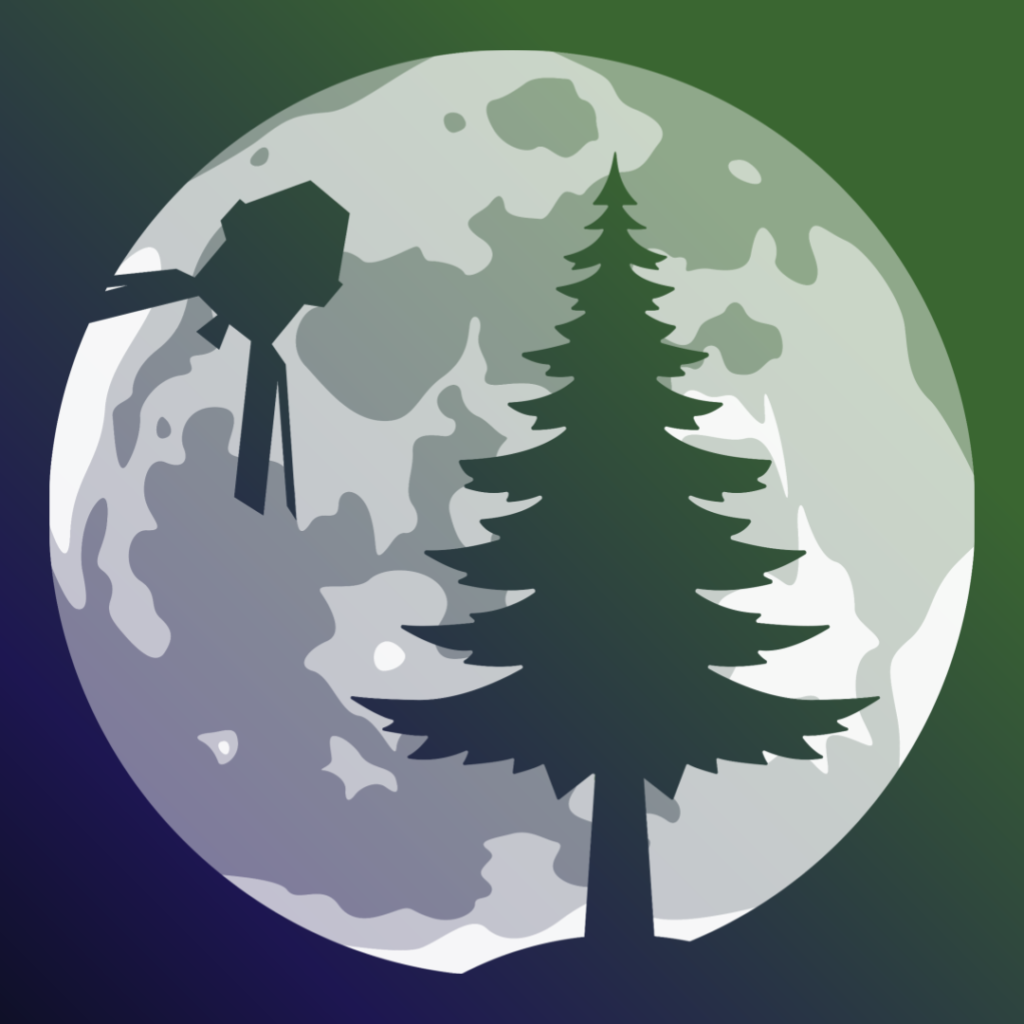

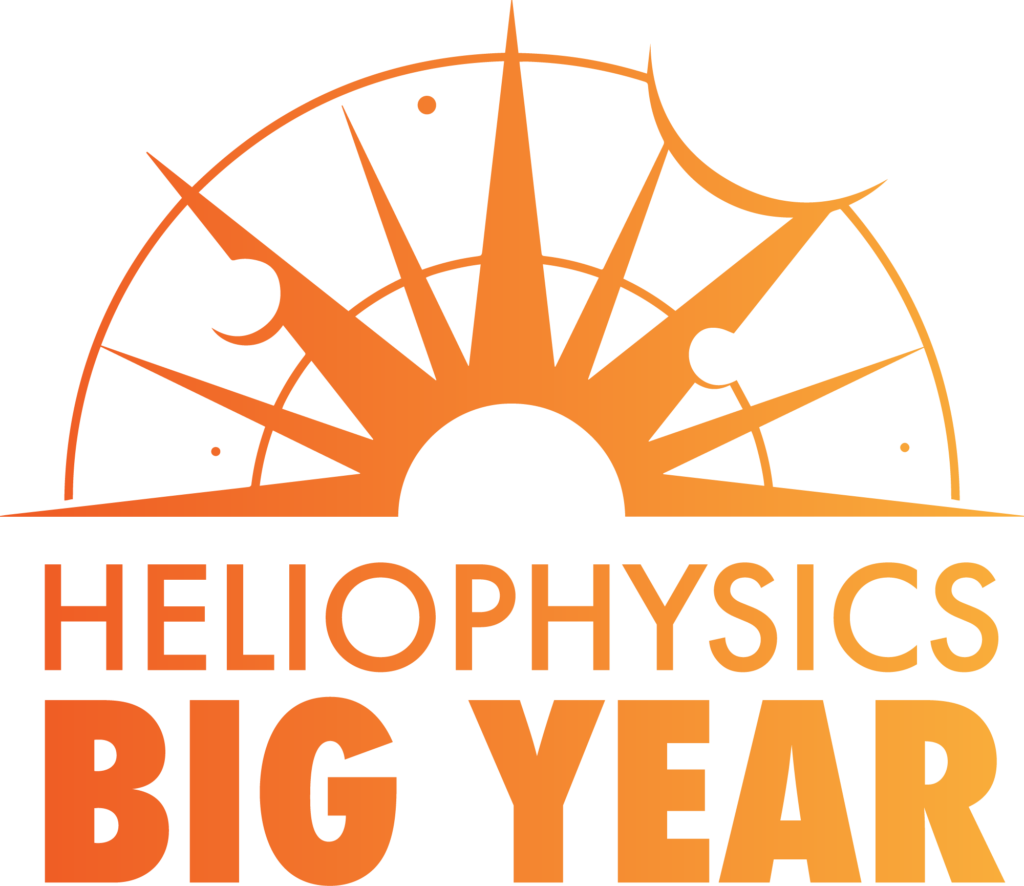


Responses